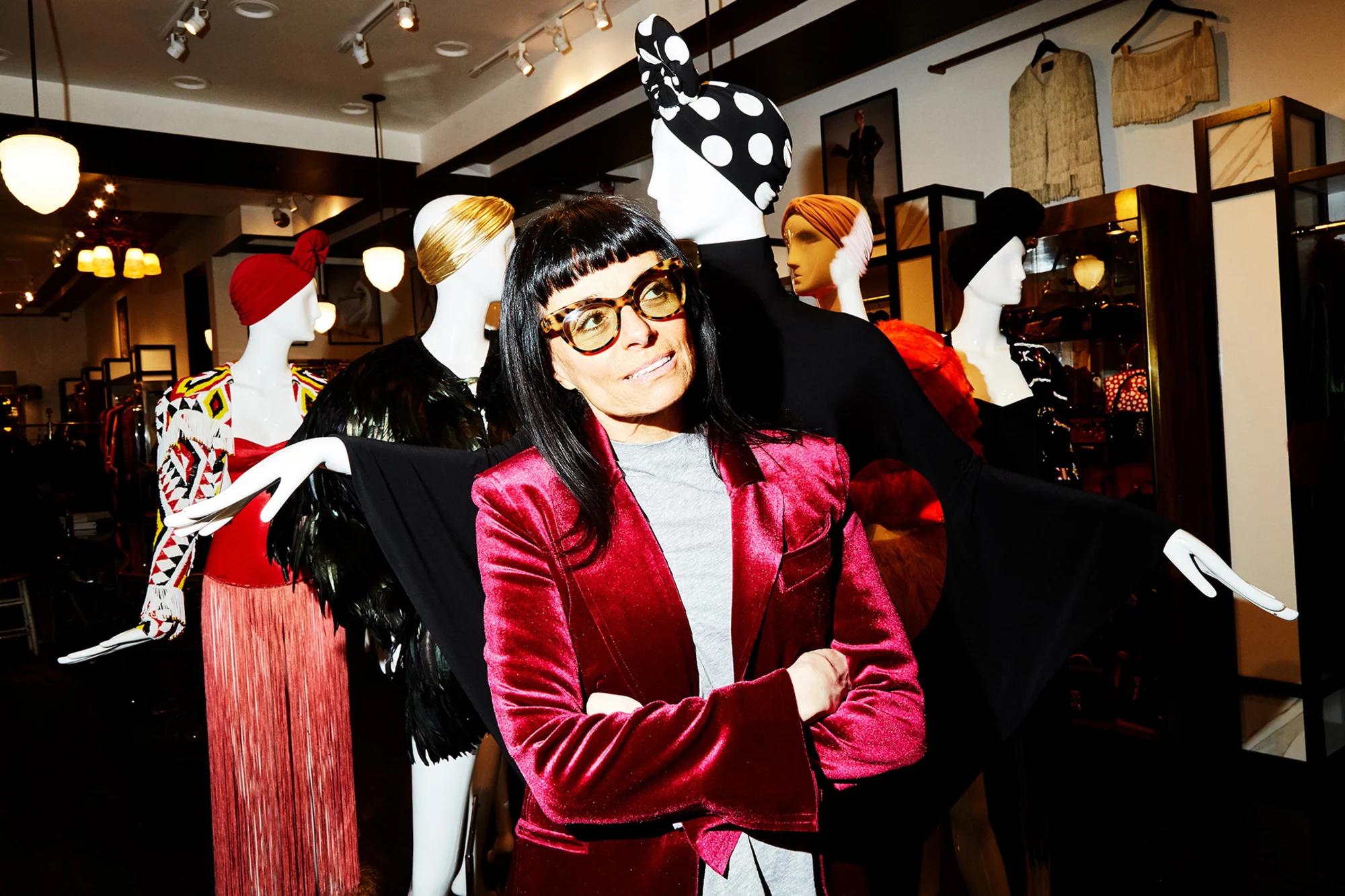Can Artificial Intelligence Sustain the Fashion Legacy of This Designer?
Norma Kamali, pictured at a 2018 celebration of her career’s designs, is contemplating the future of her eponymous brand as she nears retirement. She is exploring the integration of AI to perpetuate her creative vision. Norma Kamali, photographed in 2018, is exploring the integration of AI to perpetuate her creative vision. Image Credit: Amy Lombard/The New York Times/Redux Editor’s Note: This article was originally published by The Business of Fashion, a CNN editorial partner.

CNN — At 78, Norma Kamali isn’t yet contemplating retirement, but the iconic New York designer is already considering how her decades-spanning legacy will endure once she decides to step back from the helm.
Typically, succession planning in such cases involves grooming suitable leadership to take over creative direction and guide the brand into the future. However, Kamali’s approach diverges: she aims to create an AI counterpart of herself to support the transition.
For months, Kamali has collaborated with the AI-focused agency Maison Meta to develop a specialized tool capable of generating new designs based on her unique creative DNA, triggered by textual cues. This endeavor involves feeding thousands of images from the brand’s archives into the model, imparting it with the essence of her style.
The objective isn’t to supplant human designers; Kamali acknowledges the limitations of AI and recognizes that original human input is vital for optimal utilization. Instead, her aspiration is for her creative essence to persist within her team even after her departure.
“The model will begin to truly assimilate my thought processes. When I train others here to follow my creative path, the company’s legacy can seamlessly continue,” she explained. “With 56 years of content and a singular designer, our brand carries unique value. It’s an incredibly exciting prospect, offering avenues previously unexplored.”
Jennifer Lopez chose to wear a Norma Kamali creation on The Tonight Show in 2022. Jennifer Lopez chose to wear a Norma Kamali creation on The Tonight Show in 2022. Image Credit: Jamie McCarthy/NBC/Getty Images For legacy brands like Kamali’s, succession planning is paramount. Many companies defined by their founders, such as Helmut Lang and Ann Demeulemeester, have encountered challenges post-departure.
AI presents a novel, albeit unconventional, approach to this dilemma. Its efficacy remains to be seen.
“The limitation of AI lies in its capacity to process data. Can it truly innovate?” questions Alice Bouleau, a partner at Sterling International, a fashion and luxury executive recruitment firm. “Preserving the archive and generating countless variations of past designs is feasible. However, predicting the next move for a brand is a different challenge altogether, and therein lies my skepticism.”
Nonetheless, Bouleau suggests that brands aiming for continuity with minimal deviation might find AI integration worth exploring.
Future-proofing
In preparing an AI system for this purpose, Maison Meta collaborated closely with Kamali’s team to curate and organize imagery for training. This involved tagging images with relevant keywords to facilitate prompt-based design generation. The process initially focused on swimwear, a domain in which Kamali has excelled.
The development of a consistent avatar for generating swimwear designs posed a particular challenge, requiring a dedicated mini AI model.
Once training across various product categories is complete, the models will be amalgamated into a master system. The entire setup will be maintained on a secure local computer installed in Kamali’s office, ensuring data privacy.
Kamali’s initial objective is to employ AI for swimwear design, though she acknowledges the ongoing refinement required. She anticipates a transformative impact on the company’s operations.
“I liken it to a genius baby taking its first steps,” Kamali remarked. “I’m learning and experimenting daily, envisioning its integration into our company’s future.”
The trajectory of AI
Kamali’s AI initiative arose from a meeting with an e-commerce entity proposing AI-driven design processes, akin to “downloading her brain.” Though she declined, the concept resonated.
Maison Meta, already exploring the concept of “future vintage,” envisioned leveraging AI to perpetuate the creative legacies of designers like Vivienne Westwood. This concept extends to revitalizing dormant brands, offering predictive insights without substantial investment.
However, certain qualities inherent to founders are irreplaceable by AI. They instill a culture and purpose within the organization and its products. Thus, the transition necessitates strategic leadership post-departure.
“AI cannot articulate the ethos and essence of a brand,” Bouleau asserts. “Human creativity evolves over time, and fixation on the past can impede progress.”
Kamali shares reservations about AI’s ability to imbue designs with a soul, emphasizing the importance of pattern-making and human connection in design. While AI may present new opportunities, Kamali believes human creativity remains irreplaceable.
“There are realms beyond AI’s reach,” she affirmed. “Yet, it offers prospects we cannot ignore.”
Editor’s Note: This article was originally published by The Business of Fashion, a CNN editorial partner.
